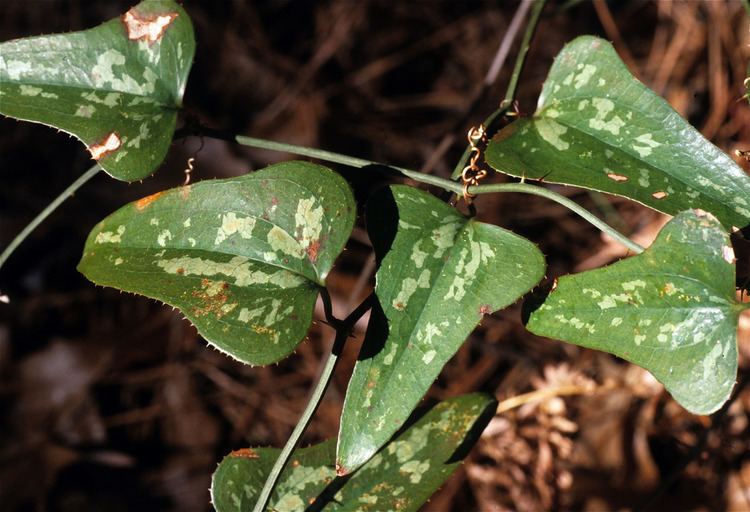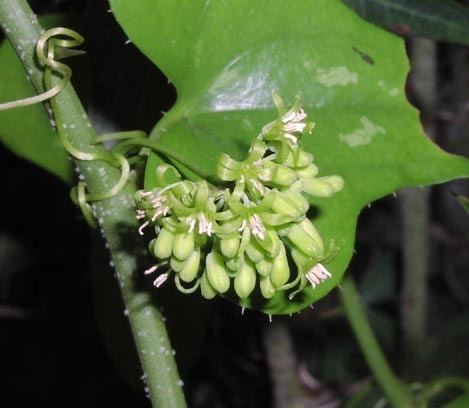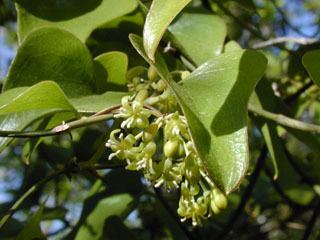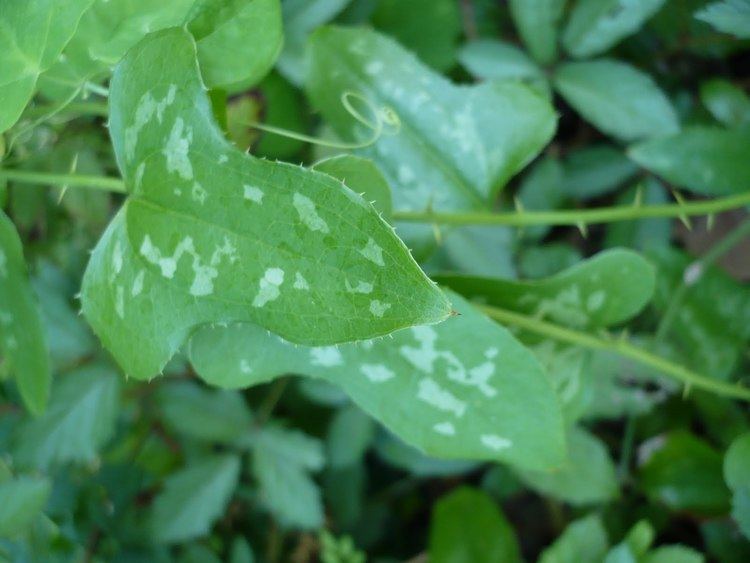Rank Species | ||
 | ||
Similar Smilax glauca, Smilax rotundifolia, Smilax laurifolia, Smilax auriculata, Smilax tamnoides | ||
Daphne richards identifies smilax bona nox central texas gardener
Smilax bona-nox, known by the common names saw greenbrier, zarzaparrilla, catbrier, bullbrier, chinabrier, and tramp's trouble, is a species of flowering plant in the Smilacaceae, or greenbrier family. The species is native to the southeastern United States from Delaware to Florida and as far west as Kansas and Texas, as well as Bermuda and much of Mexico.

This plant is a rhizomatous vine with climbing, branching stems that grow up to 8 meters long. Many of the branches are covered in prickles up to 9 millimeters long. The evergreen leaves are pale green, sometimes with white blotches, and are variable in shape. The inflorescence is an umbel of up to 15 or more pale green flowers. The fruit is a black berry just under a centimeter in length. It contains one seed. The plant reproduces by seed and by sprouting from its rhizome.

This plant grows in many types of habitat alongside plants such as muscadine grape (Vitis rotundifolia), Virginia creeper (Parthenocissus quinquefolia), trumpetcreeper (Campsis radicans), peppervine (Ampelopsis arborea), Alabama supplejack (Berchemia scandens), and eastern poison-ivy (Toxicodendron radicans). It easily grows in disturbed habitat, and can become weedy.

The fruits of this plant provide food for many species of animals, including many birds. The dense, prickly thickets make good cover for small animals.
Native Americans found several uses for the plant. The Muscogee people (also known as the Creek people) rubbed the moistened plant on their faces to enhance youthfulness, and the Comanche people used the leaves for cigarette wrappers. The Houma people of Louisiana used Smilax bona-nox roots to treat urinary tract infections and to make bread and cake.
